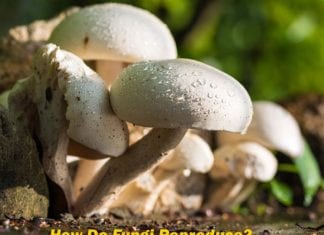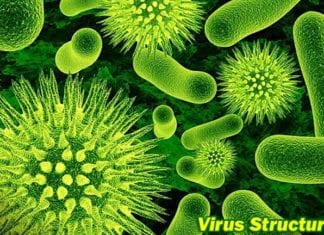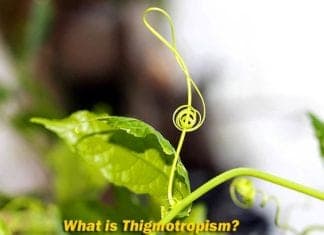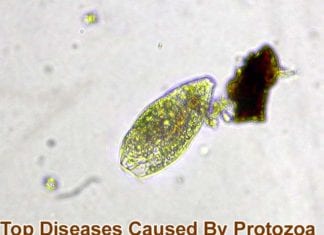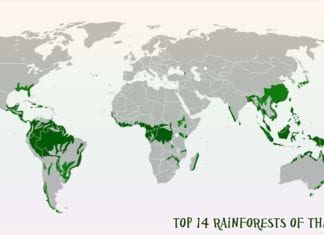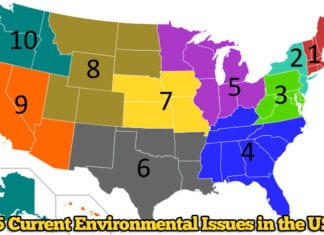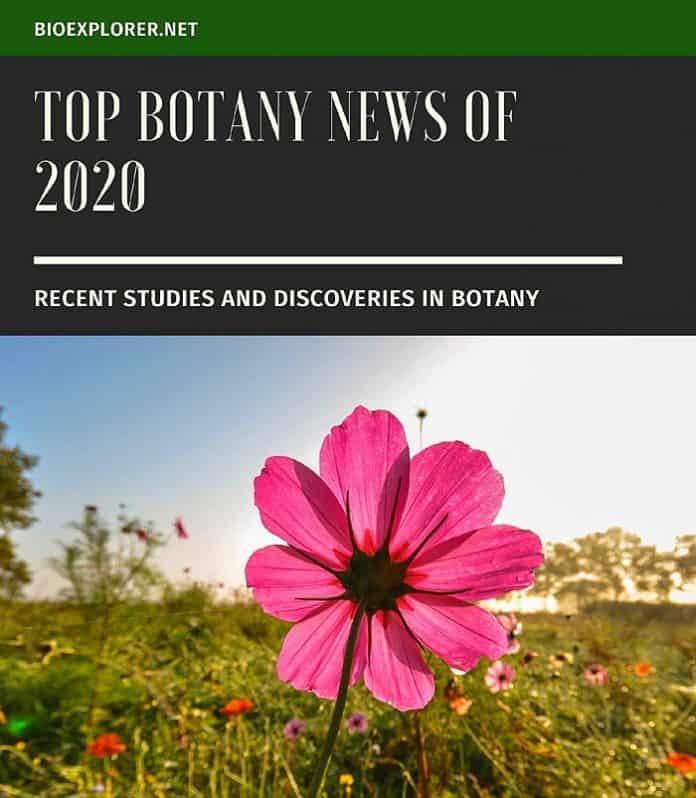
Botany News in 2020: The year 2020 was an extremely tough period for all people around the globe. The pandemic has caused us all to stay at home. It was devastating for many branches of science and economy and beneficial for plant and animal life.
If we look at the current discoveries in Botany, it is clear that Plant Science is thriving now. New, unusual plants are now discovered in Madagascar, Hawaii, and even the ocean. The botanists start to understand the complex relationships between fungi and plants more.
Recent research has also shown that our crops may have lost something crucial for successful growth – and we need to use modern technologies to remedy this situation.
Table of Contents
- Top Botany News in 2020
- 1. Scary potato orchid discovered in Madagascar [Great Britain, December 2020]
- 2. Beautiful and unique plant discovered in Hawai’i [USA, December 2020]
- 3. Adult trees grow better with a wide network of fungi [September 2020, Canada]
- 4. A virus that makes a bad fungus good [China, September 2020]
- 5. Microscopic algae living in the desert have invented their own protective mechanism against the heat [USA, July 2020]
- Explore Desert Birds & Their Adaptations
- 6. Domesticated plants lose the ability to form symbiotic relationships with fungi and bacteria [USA, May 2020]
- 7. How carbon dating has helped with understanding orchid nutrition [Japan, 27 January 2020]
- 8. Pretending to be a flower: a new way to parasitize on plants [USA, November 2020]
- 9. Quartz provides refuge for mosses in Mojave Desert [USA, July 2020]
- Top Spectacular Rainforests of The World
- 10. A dangerous invasive species of red algae discovered in the Hawai’I region [USA, July 2020]
- Key References
Top Botany News in 2020
Choosing from the latest inventions in botany 2020 was hard. Here, we try to present the most relevant botany research presented in 2020.
1. Scary potato orchid discovered in Madagascar [Great Britain, December 2020]
There are more than 20,000 species of orchids. Only the sunflower family has more than 24,000 species. The unique, delicate shape of orchid flowers has attracted multiple admirers. Yet, not all orchids possess this ethereal quality.
A Kew garden botanist, Johan Hermans, has discovered a very unusual species of orchid on Madagascar:
- The new plant was deemed a member of a potato orchids group due to its bell-shaped flowers.
- It was hard to see the flowering plant as the orchid spends most of its life under fallen leaves.
- The flower of the newly found planet is round. It resembles a potbelly, and some petals form shapes resembling teeth.
- Both the flower and the stalk are mottled brown.
- The orchid also had a scent similar to a musk rose that can attract insects, mainly ants.
- This orchid cannot photosynthesize.
- The orchid forms a symbiosis with fungi to receive nutrients.
- This species seems to be rare and grows only in a specific area of Madagascar.
- The name of the new orchid is Gastrodia agnicellus.
![]()
2. Beautiful and unique plant discovered in Hawai’i [USA, December 2020]
Hawai’i is a region famous for its green beauty. Hawaiian Flowers are especially famous, as many local species are endemic and cannot be found anywhere in the world.
Certain species are often limited to only one island or volcano. The beautiful plants of Hawai’i are on the brink of extinction because of human activity. Introduced, non-native species such as goats and rabbits that eat fragile plants also present a considerable danger.
Recently, a new flowering plant was found on the slopes of mountain Helu in Maui, Hawai’i:
- The plant has large green leaves and white, curved flowers.
- The flower was discovered as part of the Plant Extinction Prevention Program at Maui, Hawai’i.
- The flower was given the name Cyanea heluensis.
- The species belongs to the genus Cyanea, local name hahã.
- This is the only plant known for this species.
- The flower was covered in a special paste that promotes growth and protects it from being eaten by goats.
- A part of the plant was taken to be grown in controlled conditions.
Suggested Reading:
Top 11 Famous Hawaiian Birds
![]()
3. Adult trees grow better with a wide network of fungi [September 2020, Canada]
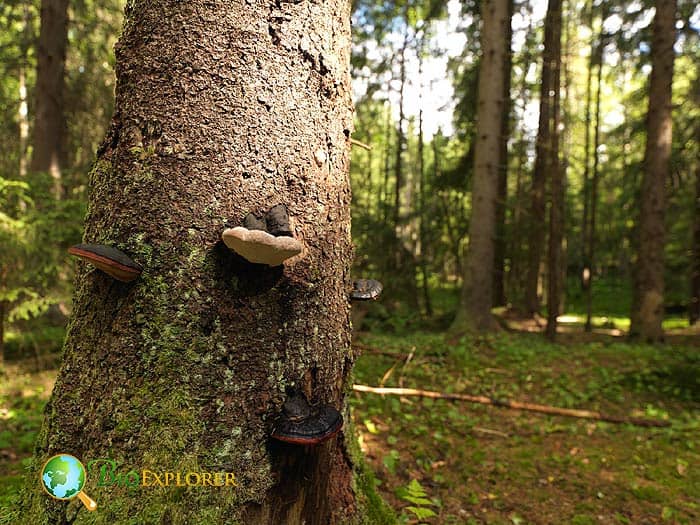
The fact that fungi and plants cooperate is well known. In this symbiosis, plants provide fungi with sugars made through photosynthesis. In contrast, fungi help plants get valuable minerals that the plants cannot otherwise reach.
Young seedlings depend on symbiosis with fungi for initial growth. Moreover, fungi are crucial for the well-being of the forests. They form so-called mycorrhizal networks that connect trees and even help support ailing trees in the forest community.
Yet, it was thought that though fungi form communication networks between trees, they do not particularly influence the growth of adult trees.
A recent study by Joseph Birch, a graduate student at the University of Alberta, has shown that this view may be wrong. The research team looked at the 300 Douglas fir trees in British Columbia:
- They have investigated which species of fungi are associated with the tree’s roots.
- The researchers also measured how extensive the fungal network was in every tree.
- The researchers also measured how much has each fir tree grown in a year.
- It was discovered that the trees that have large fungal networks also grow better.
- If the tree was connected to two different fungal species, it could grow even better than a tree with only one type of fungal “friends“.
Large trees are crucial for the forest as they influence the entire community’s lives. That is why discovering a new factor that helps the trees grow high is crucial for forest preservation. The botanists intend to look into other tree species and the fungi they are associated with to understand how widespread this influence is fungi.
Suggested Reading:
How Do Fungi Reproduce?
![]()
4. A virus that makes a bad fungus good [China, September 2020]
One of the most exciting laws is that each parasitic organism can have its parasite. For instance, fungi causing rot in plants also have their own parasites – viruses.
A team from the Huazhong Agricultural University, China, has investigated a viral infection of one of the pathogenic fungi, Sclerotinia sclerotiorum, that infects rapeseed plants:
- The virus that infects this particular fungal species is called SsHADV-1.
- The researchers have created a strain of fungi infected with SsHADV-1 called DT-8.
- When DT-8 and a standard strain of fungi were applied to rapeseed plants, the strains affected rapeseed plants differently.
- The healthy S. sclerotium causes stem rot in rapeseed plants.
- The fungi infected with the virus grew on the plants without causing rot.
- The DT-8 strain also helped the rapeseed plants grow better compared to the plants without any fungal infection.
- Exposure to the DT-8 strain made plants more disease-resistant.
- The virus could be transferred to healthy fungi from dead plants.
- This shift happens because the virus suppresses the genes responsible for this fungus’s pathological effects.
Suggested Reading:
Explore Virus Structure, Viral Structure Types, and Functions
This discovery has a long-term implication for agriculture, as using viruses affecting fungi can potentially protect crops. Currently, rapeseed is both a source of feed for cattle and a source of biofuel. Also, this discovery makes the specialists think that the symbiosis between plants and fungi may have started due to similar viral infections.
![]()
5. Microscopic algae living in the desert have invented their own protective mechanism against the heat [USA, July 2020]
Though deserts present a hazardous environment for plants, some species can successfully survive under these conditions. Some plants achieve that by conserving water.
For instance, other plants, for instance, microscopic algae found in US Southwest deserts, are highly resistant to drying out or desiccation. These algae species can fully restore their cells after completely drying out due to extreme heat.
This is particularly interesting because these algae are genetically similar to certain algae species in the sea. On the other hand, the sea species are vulnerable to drying out.
A team at the Marine Biological Laboratory, Woods Hole, MA, has decided to investigate how these two related species react to extreme heat and the threat of desiccation:
- Most algae and mosses share several genes that help protect them against drying, called LEA genes.
- There are other genes activated in response to stress.
- Usually, in reaction to high temperatures, the whole complex of genes, including LEA genes, becomes active algae.
- Analysis of the sea and desert algae has shown that this complex of genes gets activated similarly in both species.
- The desert species had one significant difference – besides activating the anti-stress genes, the algal cells also decreased the activity of other genes responsible for maintaining day-to-day activity.
- Due to such a strategy, the desert algae can dry out and then become active after the condition becomes favorable.
This discovery shows that protective genes alone are insufficient for surviving a drought. Instead, a complex mechanism that makes specific genes active while keeping other genes in check is necessary for survival in extreme environments.
Suggested Reading:
Explore Desert Birds & Their Adaptations
![]()
6. Domesticated plants lose the ability to form symbiotic relationships with fungi and bacteria [USA, May 2020]
Living alongside humans can cause significant changes in various species. When comparing a dog to a wolf, we can see it as a chicken to a wild bird or a domesticated potato plant to its wild relative.
As people domesticated plants, they made their fruit and seeds bigger. People also protected the plants from insects and other pests to some degree.
Still, they have lost more in the process than we imagine:
- A two people team from UC Riverside and the University of Washington SA were interested in how domesticated plants form symbiotic relationships with soil bacteria.
- To answer this question, they have analyzed 120 studies on symbiotic relationships in plants.
- The analysis has revealed that most species of domesticated plants have limited ability to form connections with microorganisms.
- This could have happened for three reasons:
- The selection of traits beneficial to humans can directly or indirectly lead to the loss of genes that can help with symbiosis.
- In the course of the selection process, domesticated plants gather multiple mutations that affect genes that are responsible for interacting with bacteria.
- The genes responsible for symbiosis do not carry advantages for the plants as they are provided with necessary nutrients due to human care. Therefore, they can be lost with subsequent generations.
Taken together, these findings show that there could be a need to introduce specific genes from the wild plants that could help the domesticated plant variants with symbiosis. This way, the crops could be better protected from illnesses and need less artificial nutrients.
Suggested Reading:
Explore The World of Thigmotropism
![]()
7. How carbon dating has helped with understanding orchid nutrition [Japan, 27 January 2020]
Not all orchids are capable of photosynthesis. Some have developed close relationships with fungi. Some orchids settle on living plants, mainly trees, and use so-called ectomycorrhizal fungito to take up nutrients from the hosting plants.
Some orchids do not live on trees and must use other carbon sources. These orchids were proposed to use another type of fungi called saprotrophic fungi that feed on dead matter. Until now, this theory had no direct evidence to confirm it.
A team of three scientists led by a professor at Kobe University, Kobe, Japan, have proposed a novel method of tracking the source of carbon orchids get:
- The researchers knew that the dead plants in the area they intended to research were affected by bomb tests in the 1950-1960s.
- This meant that the dead wood from those times may contain radioactive carbon, 14C.
- The orchids that feed on living plants through ectomycorrhizal fungi get “new” carbon-containing molecules produced by photosynthesis.
- The orchids that use saprotrophic fungi feed on dead wood and previously absorbed radioactive carbon from the wood.
- When the botanists tested their hypothesis, they discovered that orchids feeding on living plants contain no radioactive carbon.
- The orchids growing on old logs and similar places had high levels of 14C, up to 300%.
This study proves that orchids rely on saprotrophic fungi to obtain necessary compounds from the decaying debris in the forest. It also shows that carbon dating could be a valuable method of tracking how orchids feed.
![]()
8. Pretending to be a flower: a new way to parasitize on plants [USA, November 2020]
We know that fungi can have various survival strategies, from cooperating with plants to functioning as parasites on multiple living species, including humans. One of the most astounding fungi skills is their ability to mimic the structures of plants, namely flowers.
A scientist from the Smithsonian Department of Botany has found a new species of fungus that is capable of such flower mimicry:
- This new flower-fungus pair was discovered in the savannas of the Parakaima mountains, Guyana.
- The fungus infects yellow-eyed grasses of the genus Xyris.
- The fungus can affect the plant’s growth by producing phytohormones.
- When the plant tries to form flowers, the fungus replaces them with a bright yellow mass around the stem where the plant should grow.
- The structure formed by the fungus has the same color as the flower and can be seen in ultraviolet light.
- The fungus also produces substances that attract pollinators.
- The bees that land on the infected plant take up the fungal spores and help the fungus spread.
- Some plants with pseudo flowers were even included in old national herbariums by mistake.
- The name of the new fungus is Fusarium xyrophilum.
Though the fungus was thoroughly researched, there are still multiple questions to be answered about how this complex system has evolved and how the fungus can spread when it interferes with the plant’s ability to reproduce. It also shows that even basic research on biodiversity can bring special surprises for scientists.
Suggested Reading:
Top 12 Diseases Caused By Protozoa
![]()
9. Quartz provides refuge for mosses in Mojave Desert [USA, July 2020]
Mosses are highly resilient plants. They can survive extreme conditions – in the northern regions, deserts, and mountain areas. Mosses often live as a part of biocrusts – miniature ecosystems that contain algae, cyanobacteria, liverworts, and lichens. Mosses are known to produce substances that protect them from sunlight and cold.
Jenna Ekwealor, a Ph. D.student at the UC Berkeley, CA, USA, was studying mosses in the Mojave Desert and have found an interesting association between moss growth and the presence of translucent quartz rock:
- Syntrichia caninervis is a moss species found under milky quartz semi-translucent rocks.
- Mosses that grow under these rocks grow 60% faster compared to mosses growing in other areas.
- The quartz rocks both provide enough sunlight and protect the plants from extreme temperatures.
- The area under the rocks has its own microclimate that helps the soil retain water.
- The humidity of the soil under these rocks can be as high as 63%.
This discovery has shown that such rocks lead to the creation of small micro-communities that probably resemble those in the distant past
Suggested Reading:
Top Spectacular Rainforests of The World
![]()
10. A dangerous invasive species of red algae discovered in the Hawai’I region [USA, July 2020]
During the survey of the atolls in Hawaii, USA, a team of scientists from the University of Hawai’i has made a worrying discovery:
- The sea bottom of the Pearl and Hermes atoll region, Papahãnaumokuãkea National Monument, Hawai’i, was covered by a new species of red algae.
- The seaweed has covered a large part of the atoll in a year with a mat-like growth.
- The algae can easily detach and spread like tumbleweed.
- The analysis has shown that this was a novel species of algae and given the name Chondria turmosa.
- As there was no evidence that this species was introduced to the atoll, it was not deemed invasive.
- The researchers admit that this seaweed’s rapid growth can be dangerous as it can potentially smother coral reefs.
- The researchers took multiple precautions so that their ships and gear would not spread the algae to other regions.
The new species is the focus of intensive research as it poses a considerable danger to the northern Hawaiian Islands.
Suggested Reading:
Top 15 Current Environmental Issues in the US
![]()
Looking back to the year 2020, it is evident that the mechanisms of symbiosis and parasitism were of great interest to plant science specialists worldwide.
It is crucial to understand what helps support our plant life and what can affect it in the current situation. Fungi could also be called heroes of the research. For example, an accidental spotting of Twitter has revealed a new fungus species affecting millipedes.
Another fungus that attacks beetles were found as well. The regular plants were not forgotten either. It was found that normal plant respiration can prevent ice from melting. Another researcher looked into how young seedlings are affected by desiccation.
The researchers were focused on various aspects of plant science – protection, growth, genetics. It seems that even the pandemic could not distract people from the living organisms we cannot live without.
![]()
Cite This Page
Key References
- “Top 10 Most Beautiful Orchids in the World – The Mysterious World”. Accessed April 09, 2021. Link.
- “GASTRODIA AGNICELLUS – Hermans – 2020 – Curtis’s Botanical Magazine – Wiley Online Library”. Accessed April 09, 2021. Link.
- “PEPPHI.org – Home”. Accessed April 09, 2021. Link.
- “Mechanisms underlying beneficial plant-fungus interactions in mycorrhizal symbiosis | Nature Communications”. Accessed April 09, 2021. Link.
- “Talking Trees: How do Trees Communicate? | Let’s Talk Science”. Accessed April 09, 2021. Link.
- “Bizarre new species discovered… on Twitter — ScienceDaily”. Accessed April 09, 2021. Link.
- “New species of fungus sticking out of beetles — ScienceDaily”. Accessed April 09, 2021. Link.
- “The revolt of the plants: The Arctic melts when plants stop breathing — ScienceDaily”. Accessed April 09, 2021. Link.
- “American Journal of Botany”. Accessed April 09, 2021. Link.



